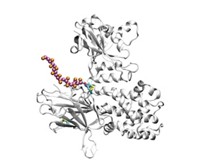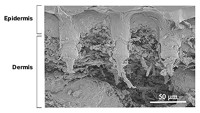Advertisement
Grab your lab coat. Let's get started
Welcome!
Welcome!
Create an account below to get 6 C&EN articles per month, receive newsletters and more - all free.
It seems this is your first time logging in online. Please enter the following information to continue.
As an ACS member you automatically get access to this site. All we need is few more details to create your reading experience.
Not you? Sign in with a different account.
Not you? Sign in with a different account.
ERROR 1
ERROR 1
ERROR 2
ERROR 2
ERROR 2
ERROR 2
ERROR 2
Password and Confirm password must match.
If you have an ACS member number, please enter it here so we can link this account to your membership. (optional)
ERROR 2
ACS values your privacy. By submitting your information, you are gaining access to C&EN and subscribing to our weekly newsletter. We use the information you provide to make your reading experience better, and we will never sell your data to third party members.
Analytical Chemistry
Sugar-Coated Particles Provoke Immune Response Against Tumors
Cancer Vaccines: Virus-like particles covered in carbohydrates unique to tumors can trigger immune systems to recognize and potentially attack cancer cells
by Erika Gebel
April 5, 2013

Cancer is essentially an invasive foreign agent, yet the immune system all too often ignores a spreading malignancy. Scientists are working on vaccines that call immune systems to arms against cancer cells, but getting a response strong enough to take out a tumor remains a challenge. Now, researchers have developed a strategy for cancer vaccines that stimulate the immune system by mimicking carbohydrate clusters on tumor surfaces (ACS Chem. Biol, DOI: 10.1021/cb400060x).
Tumor cells display a wide range of unique carbohydrates that could serve as targets for vaccine development. Scientists have tried a variety of tricks to encourage the immune system to identify and attack cells displaying these carbohydrates, such as attaching the sugars to a polymer that the immune system recognizes as foreign.
M.G. Finn of the Georgia Institute of Technology and Xuefei Huang of Michigan State University thought a virus-like particle called a bacteriophage would make an ideal carrier because it has many attachment sites for carbohydrates on its surface. With all these attachment sites, his team could produce clusters of sugars. “Clustering is key to how sugars behave in biology,” Finn says. When cells, such as immune cells, communicate with other cells, they interact with carbohydrate clusters, not lone sugars. Finn and Huang thought that displaying tumor-associated carbohydrates in dense, natural-looking clusters could get the immune system’s attention.
While Finn was at Scripps Research Institute, he and colleagues attached low, medium, or high densities of Tn—a carbohydrate associated with breast, colon, and prostate cancers—to the surface of a safe, well-characterized bacteriophage. The researchers added the sugars using a set of simple, biologically friendly reactions called click chemistry. Next, the researchers injected healthy mice over a six week period. Each animal received one of the three types of virus particles such that each dose contained the same total number of Tn molecules. One week after the final injection, the team collected mouse blood samples and, using a standard assay, measured the levels of antibodies to Tn. The mice that received the vaccine with high-density Tn clusters had the highest concentration of Tn antibodies, suggesting that the clustering did affect the strength of the immune response.
To determine if the mice’s antibodies could recognize cancer cells, the researchers mixed mouse serum containing the highest concentration of Tn antibodies with human leukemia cells displaying the Tn carbohydrate. Using a fluorescence-based assay, they could observe the antibodies binding to the cancer cells.
“This is great work,” says Zhongwu Guo of Wayne State University. “The most important problem in cancer vaccine development is poor immunogenicity,” and Finn’s vaccine clearly induced a strong immune response. Yet, “producing an immune response is just the first step,” he cautions. Finn says their next step is testing whether the vaccine can shrink tumors in mice.





Join the conversation
Contact the reporter
Submit a Letter to the Editor for publication
Engage with us on Twitter